Buying Guide for the Best Outdoor Projectors
Choosing the right outdoor projector is all about understanding what you'll use it for and the environment where you'll be using it. Outdoor spaces introduce challenges like ambient light, varying distances, and weather. To find a projector that fits your needs, first think about the size of your viewing group, how far away the projector will be from your screen, and how much control you have over lighting. Next, consider how portable you need the projector to be and if you plan to use it during the day or just at night. By focusing on the main specifications, you can narrow down your options to one that creates the best outdoor viewing experience for you.Brightness (Lumens)Brightness, measured in lumens, tells you how well the projector can display a clear image in various lighting conditions. Outdoors, you can't control the ambient light as easily as indoors, making brightness extra important. Low-brightness projectors (under 2000 lumens) are best suited for fully dark conditions, like late at night. Medium brightness (2000-3000 lumens) can handle dusk or partial shade. High-brightness projectors (over 3000 lumens) are necessary if you expect to have any ambient light, like from streetlights or twilight. Think about when you'll be watching—if it's always after dark, a lower-brightness model will work. If you expect any light pollution or want to start movies before it’s totally dark, go for a brighter projector.
ResolutionResolution refers to the number of pixels in the projected image, with common options including 720p, 1080p, and 4K. More pixels mean sharper and more detailed images. Lower-resolution projectors (such as 720p) can look fine for casual watching or small to medium screens. Full HD (1080p) gives a sharper, crisper image, making it a good balance for most people. 4K projectors offer the highest definition but are only worth it if you have a large screen and high-quality content. Think about what you’ll watch and the size of your screen—a bigger setup or watching sports/movies benefits from a higher resolution.
Throw Distance and Screen SizeThrow distance is how far the projector needs to be from the screen to create a certain size image. Some projectors are 'long throw,' needing to be quite far from the screen, while 'short throw' or 'ultra short throw' projectors create big images from close up. Think about your outdoor space. If you have lots of room, a standard or long throw model is fine. If space is limited, a short throw projector will allow for a big image even if you can’t place the projector far away. Check each projector’s recommended distance and make sure it fits your setup.
PortabilityPortability is about how easy it is to move and set up your projector. Lightweight, compact projectors are easier to carry outdoors and store away when not in use. If you plan on moving your setup frequently, look for a model that’s light and has a convenient handle or case. If your projector will stay in one place, size and weight might matter less. Consider your setup routine and how often you'll transport your projector before deciding how portable it needs to be.
Weather Resistance and DurabilityMost projectors aren’t designed to get wet or be left outside, but some offer splash-resistance or rugged cases. Weather resistance matters if dew, dust, or an unexpected drizzle might happen. For occasional use, setting up and packing away quickly is fine. If you expect more rough handling or changeable weather, look for features like weatherproofing or a tough outer shell. Always remember, though—even with some resistance, projectors should be stored inside when not in use.
ConnectivityConnectivity refers to the ways you can connect other devices to your projector—like HDMI ports, USB, Bluetooth, Wi-Fi, or built-in streaming. Multiple inputs allow you to use more devices, such as laptops, streaming sticks, or game consoles. If you want a simple setup, look for wireless options like Bluetooth speakers or screen mirroring. If you have specific sources in mind, check for compatible ports. Your main needs should guide your choice—pick what's easiest for your usual viewing habits.
Built-in AudioBuilt-in audio is about the speakers inside the projector. Some projectors have small, basic speakers, while others offer more robust sound. For solo or small-group watching, built-in speakers might be enough. For larger gatherings or a real cinematic feel, you'll likely want to connect external speakers. Check what the projector offers, but also plan for how you’ll handle sound outdoors, where noise can disappear easily.
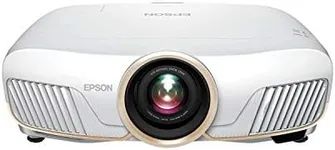


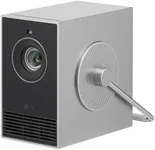
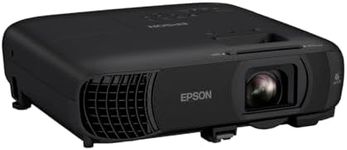
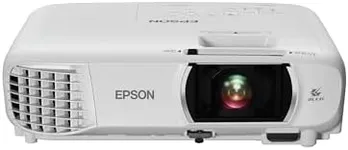
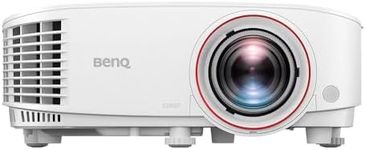
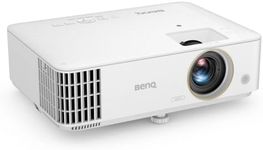




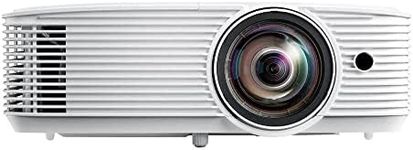
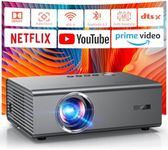
![[Sound by JBL & Built-in Battery] Yaber T2 Plus GTV Outdoor Projector - Smart Projector with WiFi 6 and Bluetooth, Native 1080P Movie Portable Projector for Indoor and Outdoor (Google TV System)](https://images-proxy.bestreviews.guide/sdI-MxmH6sX5fiyhDy6YfqKGtrE=/0x150/https://m.media-amazon.com/images/I/51A8ngjFB5L._AC_CX679_.jpg)
![[AI Movin System & 1200 ANSI] Projector-4K with WiFi 6 and Bluetooth, 30W DoIby Audio Netflix-Licensed Projector, One-touch Focus Portable 1080P Outdoor-Projector, Lisowod Smart Proyector with HDR10+](https://images-proxy.bestreviews.guide/bvd8UsBcJl4uA0I78Ai5CC5P-WU=/0x150/https://m.media-amazon.com/images/I/41Axghl+JgL._AC_CX679_.jpg)
![[Netflix-Licensed/Dolby Audio]Outdoor-Projector 4K with Wifi 6 and Bluetooth,ONOAYO 800ANSI Native 1080P Portable Projector,Built-in Netflix/YouTube/PrimeVideo, Electric Focus Keystone Smart Projector](https://images-proxy.bestreviews.guide/GIOTB8x2WxFJaGriv6fpvlOx9u0=/0x150/https://m.media-amazon.com/images/I/51Ml3AEQzhL._AC_CX679_.jpg)





